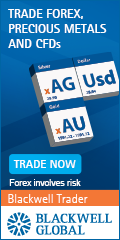Hi,
I conduct a website that deals almost exclusively with odds and statistics applied to the FOREX market. I discovered a few problems with this analysis, and wished to attempt and clarify them. One of the problems is logical, the other factual.
First of all, you're using what I refer to as the fundamental equation of trading to find out the probabilities. In other words, in breakeven the triumph rate has to be equal to the risk divided by the sum of this risk and the possible gain. W = R/(R G). For instance, if I stand to lose $100 or profit $300, my win rate at breakeven has to be 100/(100 300) = 25%. I am only explaining this for the benefit of other people that may not know where you came up with the two probability figures. The P(hit) = 1000/(1000 1700) = 37%. ) I am with you up to now.
However, taking the difference between the sum of the probabilities and 100% as Oanda's edge is where you lost me. Let me illue with an example. Suppose Oanda's payout was $4000 for both boxes. A higher payout would LOWER their edge ? Not based on your own method. The 2 probabilites would then be:
P(hit) = 1000/(1000 4000) = 20%
P(miss) = 1000/(1000 4000) = 20%
So today the sum is just 40%. Does this mean Oanda's edge is 60%? Of course not. In the event the payouts were equally boundless, both probabilities would be zero, and in accore with the logic Oanda's edge would be 100%.
Here is where I believe that the difficulty came in. In Oanda's system, they use the expression payout to spell out the entire amount that is paid to the box owner when it is hit or missed. This includes the buyers first price. In the case in which the strike box costs $1000 and pays $1700, the possible profit is ONLY $700. You pay your $1000, and whether the box hits you get your cash back and another $700. This affects your likelihood calculations to (I am rounding everything):
P(hit) = 1000/(1000 700) = 59%
P(miss) = 1000/(1000 400) = 71 percent
These include up to 130% and the fact that it is GREATER than 100% indies they have an edge. The cause of that is they are pricing that the hit box as though the likelihood of a hit have been 59%. In fact, the probability is lower, but by pricing it in this way they are (in a sense) asserting that I'm going to win more often than I actually am.
Ultimately, the way to ascertain their actual financial edge is to select the amount by which the likelihood sum exceeds 100 and divide it by 2. In this instance it is (130% - 100%)/2 = 15%.
Another way to determine why it is 15 percent is to envision what would happen if I simply bought BOTH of the boxes. Just like you mentioned, one of them is a winner. Well, if I do that then I spend $2000. However, what's my best case scenario today? It's getting a win over the HIT box that would cover $1700 back to me. So for each $2000 I spend, I can only get back $1700 (max) and Oanda keeps the other $300. Their take is $300 for each $2000 I spend, or 15%.
Hope I did not make everyone's eyes glaze over, LOL. Just wanted to describe the math on this one.






 Reply With Quote
Reply With Quote

